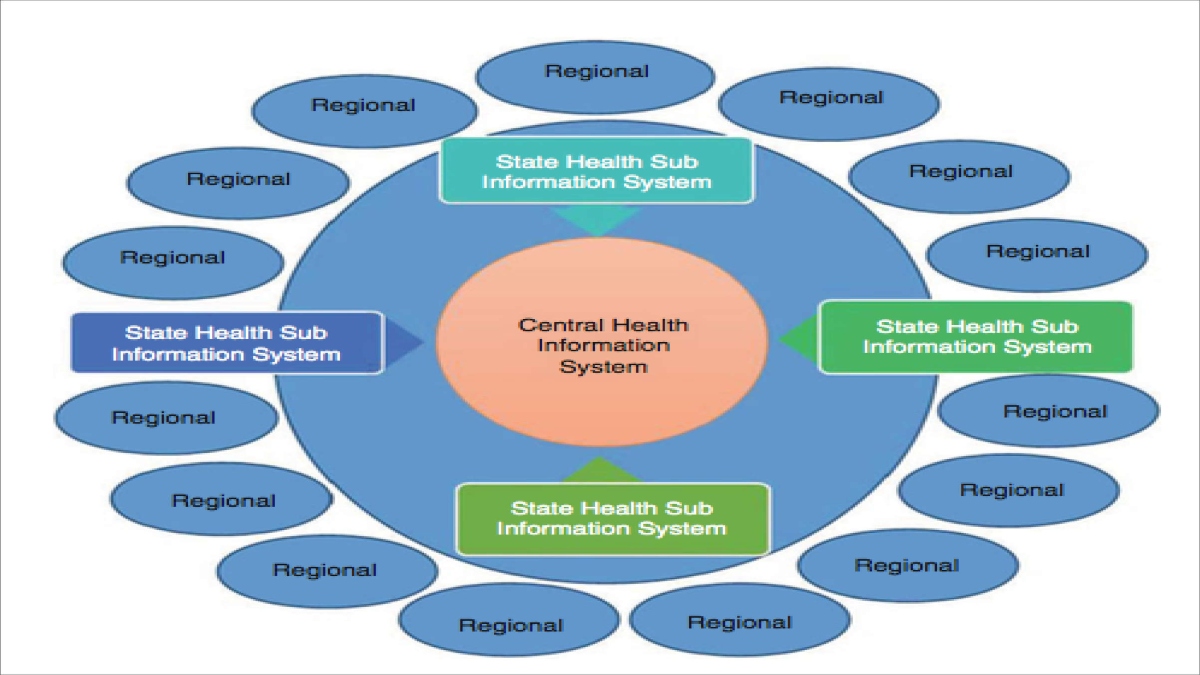
Each passing day, India’s story of the outbreak of COVID-19 is turning into a wrenching predicament. In order to control such a global crisis, it is crucial for governmental and non-governmental organisations to have access to authentic, systematic, clear, distinct, and decentralised information for inclusive, adaptive, and graded policies and decisions making and its implementation. However, due to scattered, ambiguous, conflicting, and complex nature of available modes of essential data and information, Indian policymakers are experiencing significant hardship in taking comprehensive decisions and making accurate, adaptable, realtime, inclusive policies for the wellbeing of individuals and society. The outcome of such a situational condition presents serious economic, social and political threats and challenges in front of the Indian governments in terms of surging unemployment due to shutting down of employment-generating companies, inadequate health facilities and inadequate supply of equipment, food and medicine, huge financial crashes and wealth erosion, and uncertainty of people’s livelihood as a whole.

In order to manage and regularise the unprecedented urgency posed by COVID-19, Indian government took instant measures in the form of lockdown on various levels. The first phase of lockdown was announced around 8 PM on 24th March 2020 and came in execution on 25th March 2020 just after approximately four hours of announcement without thinking of any future strategy of the course of action, exit plans, projections. Noticeably, the grounded threatening situations of different states and territories have remained unanalyzed. The negligence of the diversity of the Indian landscape, culture, ethnicity in the form of readiness of health systems, trade-off between economic and social relations had played a further negative role. Consequent extension and execution of lockdown, without the basis of systematic and comprehensive policy and decision making, have resulted into collapse of economic activities, reduction in revenue sources of central and state governments affecting the entire nation’s fiscal statistics that led to the complete disruption of livelihood of common people especially lower strata of society who are entirely dependent on daily wages. Such horrible and inhuman incidents are displayed and witnessed by the media, news agencies, and other sources for instance, videos and images of the flood of migrant labourers travelling to their native places, thousands of kilometre on foot, cycling without food and water on highways, accidents on highways, deaths by suicides and personal conflicts have shaken the faith of humanity at the core. As per the report of the Centre for Monitoring Indian Economy (CMIE), 27 million youth lost their jobs between the age 20-30 years in April 2020. A detailed account over unemployment data by International Labour Organisation(ILO) and Asian development bank(ADB)’ report state that around 41 lakh youth lost jobs due to the COVID-19 pandemic. These kinds of disruptions have not been thoroughly analysed from several dimensions by considering the enormous inhuman implications.
The data analyses provided by the Health Ministry and State governments, On 24th March, India had 618 confirmed cases of COVID-19, out of which 562 were in active status and death toll equals 13 persons. Further, it is observed that after more than two months of lockdown, India’s cases of COVID affected people are incessantly rising with 1,90,535 cases with approximately 5300 deaths on 1st June 2020 indicating the failure of lockdown. At present we are the second country in terms of infections after the USA with daily one lakh cases coming making total cases close to more than 50 lakh on 17th september, 2020.
A careful look at India’s COVID-19 story, leads us to take account of two fundamental problems faced by Indian public health sectors – First is the core health infrastructure problems, and second is the challenges of data collection and information flow. The core health problems include inadequate physical infrastructure to the large population, the dearth of health equipment, meager amount of health human facilities and personals per unit of the population as per WHO statistics. The second aspect of the problem is the lack of proper information flow, absence of the state of art data collection, processing, well balanced realtime decentralised and centralised information systems with integration of technology for systematics, scientific and data-driven decision-making keeping in mind the several dimensions, clarity, accuracy and complexity in the situations as posed by COVID-19.
Winston Churchill, Prime minister of Britain during World War II, rightly said that “Never let a good crisis go waste” and COVID-19 is one such crisis. This pandemic has explicitly exposed the weaknesses of the system in the public health sector in both the fundamental dimensions of core health infrastructure and information flow and data systems. Various observations tell us clearly that India’s COVID-19 situation has gone into severe complexity and confusion with no clear direction to adopt in the absence of state of art foundational information systems integrated with quality data collection systems, real-time integration of technology, lack of collaborative features among scattered health officials, administrators and policymakers and lack of systematic coordination among states and central governments. First foundational dimension needs long term strategy, execution and large investment but with quality, health information systems can help India in preventing such situations and donating them in a more effective manner reducing the burden on the first dimension of public health systems.
To that end, I would conclude by saying that In the 21st century, the dimension of data-driven, systematic and scientific decisions and policy cannot be ignored any more, at least not in India which has more than 1.3 billion people. A single wrong and irrational decision without sound multidimensional data analysis and scientific direction can create suffering for millions. Our health information systems need to be upgraded or developed from start to facilitate administrators and governments to make better, logical, rational decisions keeping several interdependent, conflicting variables and dimensions, the huge diversity of India and federal structure of governance in mind.
t is required to upgrade Public Health Information Systems with Industry 4.0 technologies such as Artificial Intelligence(AI), Big data analytics and Cloud computing may solve the problems of COVID-19 episode in India.
AI is a branch of computer science systems which tries to make systems and machines autonomous in taking decisions based on their experiences obtained from data through sensors and other input mechanisms and Big data analytics(BDA) is the domain of technologies and approaches of analysing the huge data which is not possible using manual methods due to its volume, veracity, velocity. Cloud computing is a very efficient and effective way of data storage in a central location for better processing and analysis. In COVID-19 situation, as it is unfolding and becoming uncontrollable, Public Health Information systems with state of art functionality would have solved our problems and would have placed us in a better situation of making accurate, timely, responsive decisions and policy in a decentralized manner without much losses and suffering to masses. It can integrate storage of all data of all hospitals such as patient information, doctors information, available hospital resources, inventories of hospitals, and share the information with all stakeholders at all levels of the district, state and national level. Data is collected at local hospitals such as districts or towns and it is stored through cloud computing at centralised locations. Since it is huge data, it requires complex and sophisticated BDA tools and methods for getting information and analysis for multidimensional point of view and graded action planning. Such analysis with BDA and AI can help in the prediction of outbreaks of diseases, yearly patterns of diseases, the demand of resources, the demography of cases, type of cases, their mortality, recovery trends in specific reasons, growths of infections in several dimensions such as socio-economic or physiography, daily and weekly trends, classification of hot spots on the basis of risks, classification of affected areas and regions, automated and intelligent suggestions using AI technology. Additionally, with the development of Web or App software, it can also reduce the need for human resources to handle routine tasks and cases. AI integrated public health information systems can provide conversational chatbots and virtual assistants such as SIRI and google assistance and Alexa, giving patients self-serving options reducing the administrative burden of paperwork with improved accuracy and productivity and reducing the health professionals burnouts cases. AI integrated with information systems applied on patient data can give health professionals a snapshot of the risks that patients may face with severity scores on the scale and letting the competent authority to decide whether to hospitalise or not which can reduce the burden of hospitalisation in pandemic COVID-19. Leveraging AI for clinical decision-making, early detection and alerting and risk assessment can represent a seismic shift in hospitals functioning and decision-making process.
The advanced public health system is one of the most important and fundamental priorities of any developed and civilised society and in a similar manner, an advanced and state of art public health information system is the fundamental requirement of any public health system to make the access of health services and products smooth, efficient, real-time and inclusive for all stakeholders and policymakers. We need to start now as it is better late than never as COVID-19 pushed us to the wall. Let us not waste this opportunity to upgrade our system to the need for challenging times as Winston churching rightly said: “Never let a good crisis go waste”.
Dr. Sachin K. Sharma is an Assistant Professor at Cluster Innovation Centre, University of Delhi. He is an established researcher in the domain of Urban Computing, Information Systems and Computational Social Systems with publications in reputed international journals and conferences.
AI is a branch of computer science systems which tries to make systems and machines autonomous in taking decisions based on their experiences obtained from data through sensors and other input mechanisms and Big Data Analytics(BDA) is the domain of technologies and approaches of analysing the huge data which is not possible using manual methods due to its volume, veracity, velocity.















